Spain is the second most visited country in the world,
its attractions are matchless. Spain is not a single, homogeneous country, but many countries in one.
Spain's regions surprise the visitor by their diversity, from the desert landscapes of Almería to the lushness of the Basque Country, or from the sweeping steppes of La Mancha to the peaks of the Pyrenees.
Spain's outdoors with a variety of landscapes and wealth of nature, the perfect environment for
walking or nature observation. The nature reserves of Doñana, the Picos de Europa or Ordesa y Monte Perdido in the Pyrenees
travel photography of Spanish landscapes pictures scenic and panoramic
in Andalucia and Catalunya with the Pyrenees and Galicia Asturias Cantabria.
Andalusia, mountain landscape |
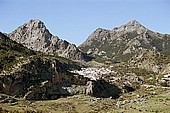
|
Forests of Spain
Spain has a magnificent variety of flora and fauna, thanks to its location between the African and European continents and between the Mediterranean and the Atlantic oceans.
Forests include cork and evergreen oak, with undergrowth rich in species and
arbutus. Mediterranean vegetation has had to adapt to whether conditions, so the typical forests are evergreen, with cork oaks for example.
In mountain area the vegetation change, from deciduous to coniferous leaves and in the highest regions, very thorny, bushy vegetation.
Along river valleys there is a rich variety of deciduous trees such as the polar (álamo), ash (fresno), willow (sauce), maple (arce), elm (olmo) and alder (aliso), as well as reeds (juncos) and bullrushes
(eneas).
There are extensive woods where two types of useful oak - the cork oak and the holm or ilex oak. Every nine years the cork oak's thick outer bark is stripped. The holm oak can be pruned about every four years and the off-cuts used for charcoal. Meanwhile livestock can graze the pastures and during the autumn, pigs are turned out to gorge on the fallen acorns - a diet considered to produce the best ham of all.
Andalucia, oak woodland |
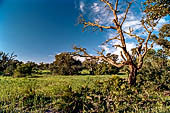
|
Fertile Plains
Olive groves on rolling hills
Evergreen oak woodlands - Dehesa
One of Spain most surprisingly beautiful landscapes, a sometimes lush, sometimes severe hill-country region dotted with old stone villages where time still passes at a donkey's pace.
Throughout this area there are vast expanses of dehesa - evergreen oak woodlands - where the region's famed black (or dark brown) Iberian pigs forage for the acorns which constitute most of their diet.
Some of the villages flanking the dehesa go back a long time, but others owe their existence to a re-population. Most villages grew up around fortress like churches or hilltop castles.
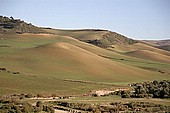
|
Spain, nature and vegetation
|
Craggy Mountain Peaks
Andalucía is one of the most mountainous regions in Spain among other. Spain it is also excellent walking country, ´Sierra de Grazalema´,
..., ..., etc.
Other vegetation you are likely to find here includes holm oak, cork oak, gall oak, wild olive and riverside forest. Among the wildlife are the ibex, chamois, roe deer, mongoose, otter and genet. Birds of prey include Bonelli's eagle, the magnificent golden eagle, the Egyptian vulture and one of Europe's largest colonies of common vultures.
|
|
|
Rugged and Varied Coastline
Spain's beaches. The Mediterranean coasts has been mostly
spoiled by mass tourism it is still possible to find unspoilt coves and beaches somewhere
in Spain's other coastlines Atlantic coast the Costa de la Luz in the Bay of
Cadiz and Cantabrian Costa Verde, green coast, yet to be discovered by international mass tourism. Andalucia coastline
the Costa de la Luz lies along the Atlantic shore to the west of Gibraltar.
|
|
|
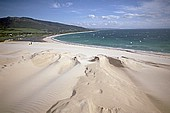
|
Andalucia, coastline and beaches
|
Marshes and Wetlands
Coto Donana
Andalusia, Marshes and wetlands |
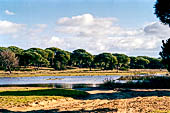
|
|
|
|
|
|
|
|



